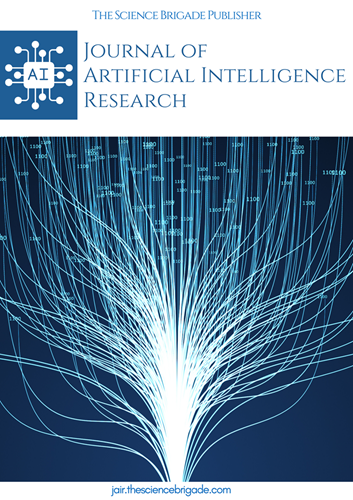Integrating Deep Learning in Project Management
Automating Image-Based Progress Tracking and Reporting
Keywords:
Deep learning, image recognition, progress tracking, project managementAbstract
The construction industry has been increasingly reliant on innovative technologies to enhance project management processes, particularly in progress tracking and reporting. This paper explores the integration of deep learning-based image recognition systems for automating progress tracking in large-scale construction projects. By leveraging advanced computer vision techniques, project managers can obtain real-time insights into project status, allowing for timely decision-making and resource allocation. The use of deep learning algorithms facilitates accurate analysis of visual data captured through images and videos, significantly reducing manual reporting overhead. This paper discusses the current landscape of image-based progress tracking, outlines the methodologies involved in implementing deep learning solutions, and presents case studies demonstrating successful applications in the construction sector. Additionally, challenges associated with implementing these technologies are examined, along with future directions for research and development.
References
Gayam, Swaroop Reddy. "Deep Learning for Predictive Maintenance: Advanced Techniques for Fault Detection, Prognostics, and Maintenance Scheduling in Industrial Systems." Journal of Deep Learning in Genomic Data Analysis 2.1 (2022): 53-85.
George, Jabin Geevarghese. "Utilizing Rules-Based Systems and AI for Effective Release Management and Risk Mitigation in Essential Financial Systems within Capital Markets." Journal of Artificial Intelligence Research and Applications 3.2 (2023): 631-676.
Yellepeddi, Sai Manoj, et al. "AI-Powered Intrusion Detection Systems: Real-World Performance Analysis." Journal of AI-Assisted Scientific Discovery 4.1 (2024): 279-289.
Nimmagadda, Venkata Siva Prakash. "Artificial Intelligence for Supply Chain Visibility and Transparency in Retail: Advanced Techniques, Models, and Real-World Case Studies." Journal of Machine Learning in Pharmaceutical Research 3.1 (2023): 87-120.
Putha, Sudharshan. "AI-Driven Predictive Maintenance for Smart Manufacturing: Enhancing Equipment Reliability and Reducing Downtime." Journal of Deep Learning in Genomic Data Analysis 2.1 (2022): 160-203.
Sahu, Mohit Kumar. "Advanced AI Techniques for Predictive Maintenance in Autonomous Vehicles: Enhancing Reliability and Safety." Journal of AI in Healthcare and Medicine 2.1 (2022): 263-304.
Kondapaka, Krishna Kanth. "AI-Driven Predictive Maintenance for Insured Assets: Advanced Techniques, Applications, and Real-World Case Studies." Journal of AI in Healthcare and Medicine 1.2 (2021): 146-187.
Kasaraneni, Ramana Kumar. "AI-Enhanced Telematics Systems for Fleet Management: Optimizing Route Planning and Resource Allocation." Journal of AI in Healthcare and Medicine 1.2 (2021): 187-222.
Pattyam, Sandeep Pushyamitra. "Artificial Intelligence in Cybersecurity: Advanced Methods for Threat Detection, Risk Assessment, and Incident Response." Journal of AI in Healthcare and Medicine 1.2 (2021): 83-108.
Alluri, Venkat Rama Raju, et al. "Automated Testing Strategies for Microservices: A DevOps Approach." Distributed Learning and Broad Applications in Scientific Research 4 (2018): 101-121.
F. Chollet, Deep Learning with Python, 2nd ed. Greenwich, CT: Manning Publications, 2021.
G. E. Hinton et al., "Deep neural networks for acoustic modeling in speech recognition: The shared views of four research groups," IEEE Signal Processing Magazine, vol. 29, no. 6, pp. 82-97, Nov. 2012.
R. Collobert and J. Weston, "A unified architecture for natural language processing: Deep neural networks with multitask learning," in Proceedings of the 25th International Conference on Machine Learning, 2008, pp. 160-167.
M. Abadi et al., "TensorFlow: A system for large-scale machine learning," in Proceedings of the 12th USENIX Symposium on Operating Systems Design and Implementation (OSDI 16), 2016, pp. 265-283.
Y. Zhang and Q. Yang, "A survey on multi-task learning," IEEE Transactions on Knowledge and Data Engineering, vol. 34, no. 12, pp. 5586-5609, Dec. 2022.
Y. Wang, Q. Chen, and W. Zhu, "Zero-shot learning: A comprehensive review," IEEE Transactions on Neural Networks and Learning Systems, vol. 30, no. 7, pp. 2172-2188, Jul. 2019.
D. Bahdanau, K. Cho, and Y. Bengio, "Neural machine translation by jointly learning to align and translate," in Proceedings of the 3rd International Conference on Learning Representations (ICLR), 2015.
M. I. Jordan and T. M. Mitchell, "Machine learning: Trends, perspectives, and prospects," Science, vol. 349, no. 6245, pp. 255-260, 2015.
J. Devlin, M. W. Chang, K. Lee, and K. Toutanova, "BERT: Pre-training of deep bidirectional transformers for language understanding," in Proceedings of the 2019 Conference of the North American Chapter of the Association for Computational Linguistics: Human Language Technologies, 2019, pp. 4171-4186.
A. Vaswani et al., "Attention is all you need," in Proceedings of the 31st International Conference on Neural Information Processing Systems (NeurIPS), 2017, pp. 5998-6008.
Downloads
Published
How to Cite
Issue
Section
License

This work is licensed under a Creative Commons Attribution-NonCommercial-ShareAlike 4.0 International License.
License Terms
Ownership and Licensing:
Authors of this research paper submitted to the journal owned and operated by The Science Brigade Group retain the copyright of their work while granting the journal certain rights. Authors maintain ownership of the copyright and have granted the journal a right of first publication. Simultaneously, authors agreed to license their research papers under the Creative Commons Attribution-NonCommercial-ShareAlike 4.0 International (CC BY-NC-SA 4.0) License.
License Permissions:
Under the CC BY-NC-SA 4.0 License, others are permitted to share and adapt the work, as long as proper attribution is given to the authors and acknowledgement is made of the initial publication in the Journal. This license allows for the broad dissemination and utilization of research papers.
Additional Distribution Arrangements:
Authors are free to enter into separate contractual arrangements for the non-exclusive distribution of the journal's published version of the work. This may include posting the work to institutional repositories, publishing it in journals or books, or other forms of dissemination. In such cases, authors are requested to acknowledge the initial publication of the work in this Journal.
Online Posting:
Authors are encouraged to share their work online, including in institutional repositories, disciplinary repositories, or on their personal websites. This permission applies both prior to and during the submission process to the Journal. Online sharing enhances the visibility and accessibility of the research papers.
Responsibility and Liability:
Authors are responsible for ensuring that their research papers do not infringe upon the copyright, privacy, or other rights of any third party. The Science Brigade Publishers disclaim any liability or responsibility for any copyright infringement or violation of third-party rights in the research papers.




